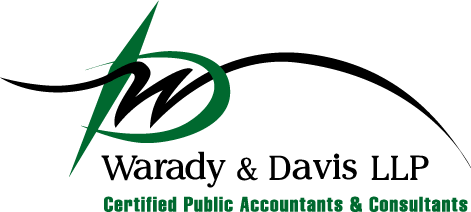The Biden-Harris administration announced several reforms to further target the Paycheck Protection Program (PPP) to the smallest businesses and those that have been left behind in previous relief efforts. The following are specific changes:
1. Create 14-day period, starting Wednesday, Feb 24-2021, during which ONLY businesses with fewer than 20 employees can apply for PPP loans.
98 percent of small businesses have fewer than 20 employees. And while smaller businesses have received more relief in this round of PPP, they often struggle more than larger businesses to collect the necessary paperwork and secure relief from a lender. The 14-day exclusive application period will allow lenders to focus on serving these smallest businesses.
2. Help sole proprietors, independent contractors, and self-employed individuals receive more financial support.
These types of businesses make up a significant majority of all businesses. Of these businesses, those without employees are 70 percent owned by women and people of color. Yet many are structurally excluded from the PPP or were approved for as little as $1 because of how PPP loans are calculated. To address this problem, the White House in conjunction with the SBA will revise the loan calculation formula for these applicants so that it offers more relief. A $1 billion set aside for businesses in this category without employees located in low- and moderate-income (LMI) areas is also established.
3. Eliminate restriction on small business owners with prior non-fraud felony convictions
Currently, a business is ineligible for PPP if it is at least 20 percent owned by an individual who has either: (1) an arrest or conviction for a felony related to financial assistance fraud within the previous five years; or (2) any other felony within the previous year. To expand access to PPP, the White House will eliminate the second restriction (the one-year look-back) unless the applicant or owner is incarcerated at the time of the application.
4. Eliminate an exclusionary restriction that prevents small business owners who are delinquent on their federal student loans from obtaining relief through the Paycheck Protection Program.
Currently, the PPP is not available to any business with at least 20 percent ownership by an individual who is currently delinquent or has defaulted within the last seven years on a federal debt, including a student loan. Millions of Americans are delinquent on student loans, including a disproportionate number of Black borrowers. Working with the Departments of the Treasury and Education, the SBA will remove the student loan delinquency restriction to broaden access to the PPP.
5. Ensure access for non-citizen small business owners who are lawful U.S. residents by clarifying that they may use Individual Taxpayer Identification Numbers (ITINs) to apply for relief.
The PPP statute is clear that all lawful U.S. residents may access the program, but a lack of guidance from the SBA has created inconsistency in access for ITIN holders like Green Card holders or those here on a visa. The SBA will address this inconsistency by issuing clear guidance in the coming days that otherwise eligible applicants cannot be denied access to the PPP because they use ITINs to pay their taxes.
In addition to these five changes, the following steps have been and will continue to be taken to ensure equitable distribution of relief:
- Address waste, fraud, and abuse across all federal programs. Unlike the previous round of the PPP, loan guaranty approval is now contingent on passing SBA fraud checks, Treasury’s Do Not Pay database, and public records. The SBA now also conducts manual loan reviews for the largest loans in the PPP portfolio and a random sampling of other loans. The SBA has worked, and will continue to work, with its lender partners to create streamlined processes to resolve issues as quickly as possible, while still ensuring taxpayer dollars are spent wisely.
- Promoting transparency and accountability by improving the PPP loan application. To encourage self-reporting of demographic data and better illustrate the impact the PPP is having across various population segments, demographic data will be moved from page 3 to page 1 of PPP applications. PPP1 Application – February 17, 2021. PPP2 Application – February 17, 2021
Questions?
Contact your Warady & Davis advisor or our PPP team at 847-267-9600; info@waradydavis.com. You can also visit the Warady & Davis LLP COVID-19 Resource Center for a wealth of information on stimulus assistance, new legislation and much more. This information is updated regularly.
SOURCE: The White House and AICPA
Legal Notice: The materials communicated in this transmission are for informational purposes only and not for the purpose of providing accounting, legal or investment advice. You should contact your accountant or advisor to obtain advice with respect to any particular issue or problem. Use of and access to this Web site or any of the e-mail links contained within the site do not create an accountant-client relationship between Warady & Davis and the user or browser. You should not act upon any such information without first seeking qualified professional counsel on your specific matter. Any accounting, business or tax advice contained in this communication is not a substitute for a formal opinion, nor is it sufficient to avoid tax-related penalties. If desired, Warady & Davis would be pleased to perform the requisite research and provide you with a detailed written analysis. Such an engagement may be the subject of a separate engagement letter that would define the scope and limits of the desired consultation services. © 2021 All Rights Reserved
